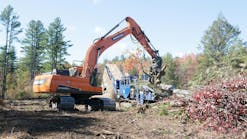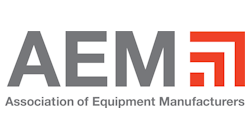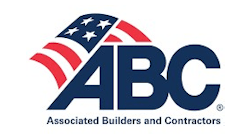Bids are in, contracts are signed, and site reconnaissance is completed. Now it’s time to get started – bulldoze trees, excavate foundations, remove debris, and assemble materials. Getting started means getting the equipment to the job site, and the majority of equipment is transported via trailer. Trailers – vehicles towed by another vehicle or large vans pulled by a truck, especially for hauling freight – come in a variety of styles and prices. There are more than 1,500 trailer manufacturers, and with that many manufacturers, how does a contractor find the right one? After all, equipment trailers aren’t sold at the local convenience store or swap meet. It’s important to look for reliable manufacturers and quality products. Use the same skills you would when buying the family SUV. Most manufacturers advertise in magazines, maintain Web sites, and participate in trade shows. Visit rental dealers, ask questions of dealers and vendors, learn about the newest trends, and listen to others. Word of mouth can steer you to a reputable manufacturer and a quality product.Even if you’ve purchased trailers in the past, reeducate yourself. Regulations, product development, hydraulic use, and lighter, stronger metals have changed the market. With payload capacities up and trailer weights down, lighter trailers carry heavier payloads and are still within legal limits.The purchase of a trailer should be a win-win for both the buyer and the seller. Although cost varies, a trailer can be an investment of at least $9,000 and upwards of $55,000. The buyer needs to do the homework in order to best evaluate the features of various brands. When investing thousands of dollars in equipment that will be driven over tree stumps, rock, and unpaved roads, it is important to be an informed shopper. Know what your needs are before you go. Know Your Load“If you know how much and how long and how wide and how tall and the weight and where you are going to pick up and where you are going to deliver,” says Marvin Odegaard, sales manager of Trail King Inc., “if you have all of that information with you when you come in the door, our dealer can spec out the right trailer.”If you’re hauling steel or lumber, your needs will be different than if you’re hauling bulk sand. “The type of trailer you need is generally dictated by the type of load you are carrying and how you will load or unload it,” says Sandy Kloepfer, general manager of Titan Trailers Inc. “The majority of trailers you see are dry-freight vans – basically a simple box on wheels produced on an assembly line. Highway and heavy[-equipment] contractors are more likely to need some sort of flatdeck trailer, including drop decks and floats, to transport equipment and lumber or steel supplies.”Bulk materials require a dump. “A dump or [live-]floor trailer hauls bulk material, such as sand, aggregate, and waste,” continues Kloepfer. “Dumps can include rear-dump, belly-dump, and B-train models. The individual dumps may be easier to maneuver on the job site while a transfer trailer may allow for larger loads.”When you need something that combines transporting equipment with dump capability, consider the dump trailer. “The dump trailer has really taken off in the last year,” says Christian Baillie, national sales manager at EZ Dumper Products LLC. “It is so versatile. You can deliver and pick up equipment. You can also use it for onsite dump and final removal.” EZ Dumper addresses the need with its BIGCAT dump trailer. The BIGCAT’s bed rises to the steepest angle in the industry: 51°. It can dump more than 7 yd.3 of wet mulch in less than 30 seconds. Types of materials and equipment to be hauled determine the type of trailer. “Weight and size are important for us to know to be able to recommend the right product,” notes Bob Cramer, sales manager at Redi-Haul Inc. “Weight and overall size of equipment and products being hauled will determine the size of trailer best suited to your operation.” “The most important information you can share with the dealer is the job profile,” adds Kloepfer. “Know the type and size of loads, backhaul, road regulations, distances and topography, and loading and off-loading restrictions.” What’s the “Real” Cost?
Paying $55,000 for a custom-built trailer might seem extravagant to some, but it could be a wise investment. It’s hard to put a price on a quality product, produced by a reputable company that provides reliable service. Sometimes cost can’t be measured in dollars. “Buyers today are more inclined to analyze the long-term investment value of their purchase versus buying on basic features and specs,” explains Kloepfer. “A trailer is a business investment and should be evaluated in terms of the actual return on investment it generates.” Kloepfer also advises buyers to figure in the total cost of ownership – financing, expected life cycle, fuel, service, and maintenance costs – as well as resale value. Price might not reflect total costs. “The market is ever-changing,” says Charles D. Wells, director of dealer development and dump trailer products at East Manufacturing Corporation. “Regulations, regional needs, and new technology lead the charge for every new product and product development. These product changes may not always be reflected in initial cost.” One of East’s trailers, Genesis, has an aerodynamic design that allows for easier running and makes it easier on fuel. Says Wells, with 5 to 10% better mileage, it could save buyers as much as $3,000/yr.Fuel savings must be figured into cost. Kloepfer says Titan’s Thinwall panel gives trailers a fuel savings of up to 15%. To find the total cost of ownership, Kloepfer suggests that you figure expected revenues related to type, size, and number of loads the trailer will carry. “In addition to fuel costs, annual maintenance might include replacing light bulbs, treating the deck, replacing leaky suspensions, wear and tear on tires, replacement chains and hooks, and yearly safety checks,” adds Cramer. With a high-quality, well-made, well-designed product, annual maintenance is minimal. “Annual maintenance on the average Redi-Haul trailer would be around $200 a year.” As with other quality products, Trail King’s yearly routine maintenance is minimal. “Excluding brakes, tires, and axles, yearly costs would be $100 to $1,000,” says Odegaard. “Not that it can’t get expensive. With a million-dollar trailer, you’ll have a lot of maintenance. After all, there are 264 tires on it!”One way to add value to existing equipment is with an EZ Dumper insert. Designed to convert a pickup truck into a dump truck, the insert product is 32 years old and costs around $2,300. The insert is so reliable, says Baillie, that one of his customers is on his first insert but his seventh truck. The insert requires minimal preventive-maintenance grease at its pivot points and axles. “Fortunately,” Baillie says, “there are more trucks out there for us to fit than ever before.”And as a reputable manufacturer should, EZ Dumper constantly is upgrading, improving, expanding, and adding value to its units. Baillie says 100% of the line has been improved and updated within the last six months.Look to manufacturers with patented, exclusive products and features. “All East aluminum trailers are constructed from alloys that are up to 33% greater than industry standards,” notes Wells. “All East trailers are equipped with the East Elite wheel-end system, providing extended warranty as a standard feature.”“Comfort and safety are important but intangible values,” says Kloepfer. “A well-built trailer that maximizes performance and durability values is also most likely to pull well and work safely with normal maintenance.” Cost alone doesn’t drive new purchases. “New purchases are typically driven by utilization and a company’s overall financial health,” Cramer says. According to Wells, the two ends of the spectrum are price and a product that addresses all of the needs and desires of the buyer, with less regard paid to price.“I ask if they are looking for long-term investment,” describes Odegaard. “Do they want equipment that lasts for two to four years? [In that case,] they should buy used or something other than a Trail King. We believe the life expectancy [of the Trail King] is much greater than that of used or competitors’ products.”All of these factors impact the profitability of the trailer and are part of the cost. “The bottom-line profitability is based on a per-mile, per-load, or per-contract basis over the working life of the unit,” says Kloepfer. In the long term, it is better to spend a little more up-front on good, reliable equipment. You might be able to afford that reliable equipment by checking out different financing packages. One of the advantages to buying from a Trail King dealer is in-house financing. “We have our own financing,” explains Odegaard, “with Trail King Inc. Express. Our dealers have the experience and training to get you through the process. Having the in-house financing makes turnaround faster.”Cost is usually the major consideration when purchasing equipment or making a capital investment. Not many of us can break out the checkbook and write a check to cover such business expenses. Each purchase must be weighed against other factors within the company. Wells suggests using the same criteria when deciding whether to buy or lease a trailer as when making a similar decision for other pieces of equipment. “One should use the same considerations for most equipment. Check with your tax or financial adviser.”Trailers aren’t cheap. Skid-steer trailer prices start at $3,600 and go up to $8,000, says Cramer. Prices for tag trailers (those commonly used for backhoes) range from $9,000 to $22,000. But price should not be the only consideration. Trail King’s products are priced similarly. “Skid-steers start at $2,500 and go to about $5,000. Some for large excavation can run from $35,000 to $75,000,” says Odegaard. “We even have a million-dollar trailer for hauling transformers.”“Typically,” adds Wells, “there is a primary purpose for the equipment and then secondary backhaul purposes.” He thinks there are at least four specification objectives to consider when looking to buy equipment, including optimum payload, low “cost of ownership,” equipment versatility, and safety.“A new or startup contractor, short on funds, realizes he should have the better trailer,” says Cramer, “but he’ll cut corners and save enough on the trailer to buy another piece of equipment. Those contractors who have been in business five or six years are able to make the right investment.” A low-priced trailer might not offer quality and reliability. According to Cramer, you can get a skid-steer trailer for $1,500–$1,800, but it won’t have globe-mounted lights, sealed modular wiring with circuit breakers, or other features of quality workmanship. “Top-end quality trailers don’t require much maintenance,” he says. “Most of the costs incurred are because of lack of daily care, like inspecting tire pressure on a daily basis.” A quality trailer, with care, can last 10 or more years. Cramer has some customers driving around Iowa with trailers nine and 10 years old. If he asks when they’re going to get a new one, they tell him they’re not going to trade. They tell him there’s nothing wrong with the frame and the wiring is good. They check the brakes every year, maybe spend $300–$400, and have a trailer as good as new.When comparing special features, such as Trail King’s HST (hydraulic sliding tail) to others, look for 1.5-in. oak wood in the decking, crossmembers on 12-in. centers, and a 3/16-in. floor plate over the foldunder. When considering the cost of buying a trailer, don’t forget resale value. The resale value can be a critical factor in calculating total cost of ownership and return on investment. “Not only do you need to consider whether to buy or lease, but [you also need to consider] whether to buy new or used equipment,” says Wells. “Resale should be an important point for any buyer. It is one factor that should be applied to the cost of operating the equipment.” East Manufacturing offers used equipment on its Web site. “The used market depends on availability, suitability for the job, risk tolerance, tax considerations, maintenance, warranty, et cetera.” Just like when you are buying new, it is important to deal with a reliable company. Kloepfer agrees that a reliable product is worth the initial cost. “A newer trailer allows you to amortize the initial cost over more years and maximize the benefits of the features you request. A used trailer might not be featured for the best performance for your jobs, but if the price is right, it may work out to the best return over a shorter term.” Kloepfer says finding a used Thinwall trailer would be difficult simply because the oldest units are still in service and in excellent shape with the original owners. “Redi-Haul Trailers also strives to provide quality-built products to our customers 100% of the time and to exceed our customers’ expectations,” says Cramer. Value for dollars spent at Redi-Haul can be seen when shopping on-line. Ten-year-old Redi-Haul trailers list on eBay for $1,200. Cramer sums up the new-versus-used debate: “Most [companies] would prefer new due to no or low maintenance costs.”Another Cost Factor—SuspensionRidewell’s RAR-240 is designed for use on construction and heavy-duty trailers.Trailer buyers must know the type of trailer they need and where and how it will be used, and they must look beyond outside appearances to getting the right suspension system. “The stability of air-ride suspensions by most manufacturers is far superior to that of 20 years ago,” points out John E. Millsap, vice president of Ridewell Corporation. “Air-ride suspensions perform very well going from highway to off-road, but again, it is important for the suspension company to know exactly what is needed ahead of time in order to supply the correct product.”“A good suspension system can add $4,000 to $8,000 per axle for auxiliary axles and $2,000 to $4,000 per axle for trailer primary axles to the cost of the trailer,” says Rick Rickman, director of sales for Watson Suspensions. “It’s important to know customer requirements and preferences and the weight laws in effect where the vehicle will be used. For auxiliary suspensions, you need to know if the suspension needs to steer. For both auxiliary and trailer primary-axle suspensions, you need to know capacity and the kind of wheel-end equipment you want.”The normal operating costs for suspension systems on trailers are negligible. “The most normal maintenance,” continues Rickman, “is replacing bushings after five to seven years. You also have to check torques on all nut and bolt connections and do periodic visual inspection for cracks and unusual wear.”With the excellent suspension products available on the market, maintenance costs are minimal over the lifetime of the system. Millsap suggests checking the torque values on a routine basis. “Bushings should last for at least five years on-road and maybe less for off-road,” he says. “Air springs are very durable and can last many years, again depending on the environment in which they are used. Shocks should be changed at least every two years.”According to Millsap, Ridewell holds more than 30 active patents for exclusive features that provide low maintenance and superior ride quality. “Ridewell primarily offers model RAR-240 underslung for use on construction and heavy-duty trailers,” he says. “The underslung 240 is a low-mounting height suspension. Ridewell also manufactures auxiliary suspensions to convert heavy-duty tractors to four axles.”Rickman says Watson produces the industry’s most complete line of auxiliary-axle suspensions and a full line of air-ride and mechanical trailer suspensions. “Watson makes the lightest steerable-lift axle available. The Tru-Track Super Lite is the industry’s only 8,000-pound-capacity steerable-lift axle. The newest addition to the Tru-Track line is the SL-0851TT.” Ridewell is on the forefront of using integrated components. “Weight and cost are always important for the manufacturer and the end user,” explains Millsap. “Integrated components play a part in reducing both. Ridewell offers trailer manufacturers a couple of options with regard to integrated components. The manufacturer may choose to purchase a complete suspension from Ridewell with the axle unitized and/or ABS-ready; they may choose to purchase the suspension only and provide their own components and install them at their facility; or they may have the components drop-shipped to Ridewell for installation on the suspension.”Reputable manufacturers and leaders in the field provide innovations. “The Tru-Track trade name represents our family of auxiliary-axle suspensions with fully integrated suspensions and axles,” says Rickman. “The results are seen in lower weight and cost.”A reliable company brings many intangible features to the table. One of Ridewell’s best features is the clamp-in bushing. “We have offered the clamp-in bushing feature for more than 15 years,” reports Millsap. “This feature allows a customer to rebush the suspension with common shop tools. No hydraulic presses are needed. This cuts the time it takes to rebush at least in half. These features allow you to get your trailer back on the road with lower maintenance costs and decreased downtime.”After the BuyYou’ve bought the right trailer, made a good investment, kept maintenance costs low, and decreased downtime; the only thing you don’t have control of is the actual sites to which you’ll take the trailer.“It’s probably easier to anticipate your worst-case conditions in your job profile than to manage the actual sites you drive on,” says Kloepfer. “Naturally the best surfaces for driving on are also the easiest on the trailer. Common-sense safety precautions will protect the trailer from outside impacts.”Wells agrees that driving on smoothly graded roads is easiest on trailers. Look for or develop level transitions to reduce trailer twisting. “Reduced trailer twisting is easier on suspensions, chassis, and body and all attachment points.”“Steep ramps are not trailer- or suspension-friendly,” adds Millsap. “Repetitive use on ramps without sufficient travel available can damage axles, suspensions, and trailers [and keep them] from becoming high-centered.”It’s also important to look for other conditions that might endanger the driver and damage the equipment. “Obviously anywhere that weight can crush or collapse the surface under the truck is dangerous,” Wellls asserts. “Dump trailers are particularly susceptible. As the trailer rises, the weight gets transferred to the rear axles. Turnovers are sometimes the result of dumping at the edge of a high wall or ledge that gives way under the axles.”“Dirt creates driving conditions that require slower speeds and more distance for stopping,” says Cramer. “Therefore [there is] more wear and tear on brakes, tires, suspension, and appearance of a trailer.” Redi-Haul’s transport trailers have brakes on all axles and a safety breakaway system. “Redi-Haul’s SL Series Transport Trailers are an excellent choice for construction, rental, and light agricultural usage. Use the SL to move trenchers, tractors, skid-steer loaders, mowers, rollers, and other hard-to-load equipment.”Compare the BestWhen shopping, be sure to compare apples to apples and trailers to trailers. Look for products with higher-gauge steel, axles with easy-access hubs, electric brakes, adjustable-hitch features, sealed and shock-mounted lights, high-quality paint, radial tires, heavy-duty safety chains, remote control, and other special features and optional equipment.Cramer says it’s hard to distinguish quality products just by looking at them. “If you have them sitting side by side, the customer doesn’t know the differences in quality and why the price may be more for one than another. Some of the signs of a lower-quality trailer are smaller channel, angle iron, pine floors, and floors screwed rather than bolted. Better materials can increase the cost of the trailer but are signs of a quality product.”Recycle, Resell, ReuseAfter decades in business, East Manufacturing, EZ Dumper, Redi-Haul, Titan, Ridewell, and Watson continue to produce reliable, long-lasting trailers and related systems. Planned obsolescence is not in their business plan, but sometimes a piece of equipment has to be taken off the line. “The new life can be as simple as a return to the steel plant for recycling and getting a new life,” says Cramer. “Most customers tell us that they expect a minimum life of 10 years,” relates Wells, “but we have many customers who have East trailers that are 25 to 30 years old. Many used trailers find export markets.”“The end for a Titan trailer is usually the result of deterioration in the body from rot and/or corrosion or structural damage to the frame due to stress-cracking,” says Kloepfer. “Running gear can be serviced, upgraded, and replaced for a very long service life. Some fleets will replace equipment on a scheduled basis to avoid the costs and downtime required for maintenance work. We don’t know how long a Titan trailer can run because our oldest units are still working for our customers.”You might want to trade in your previously owned equipment. Practice your barter skills; most dealers will take first-class products in trade for the newer, improved model.For more information on manufacturers mentioned in this article, refer to the following Web sites: http://www.watsonsuspensions.comhttp://ridewellcorp.comhttp://eastmfg.comhttp://ez-dumper.comhttp://redihaul.comhttp://titantrailers.com/http://www.trailking.com








